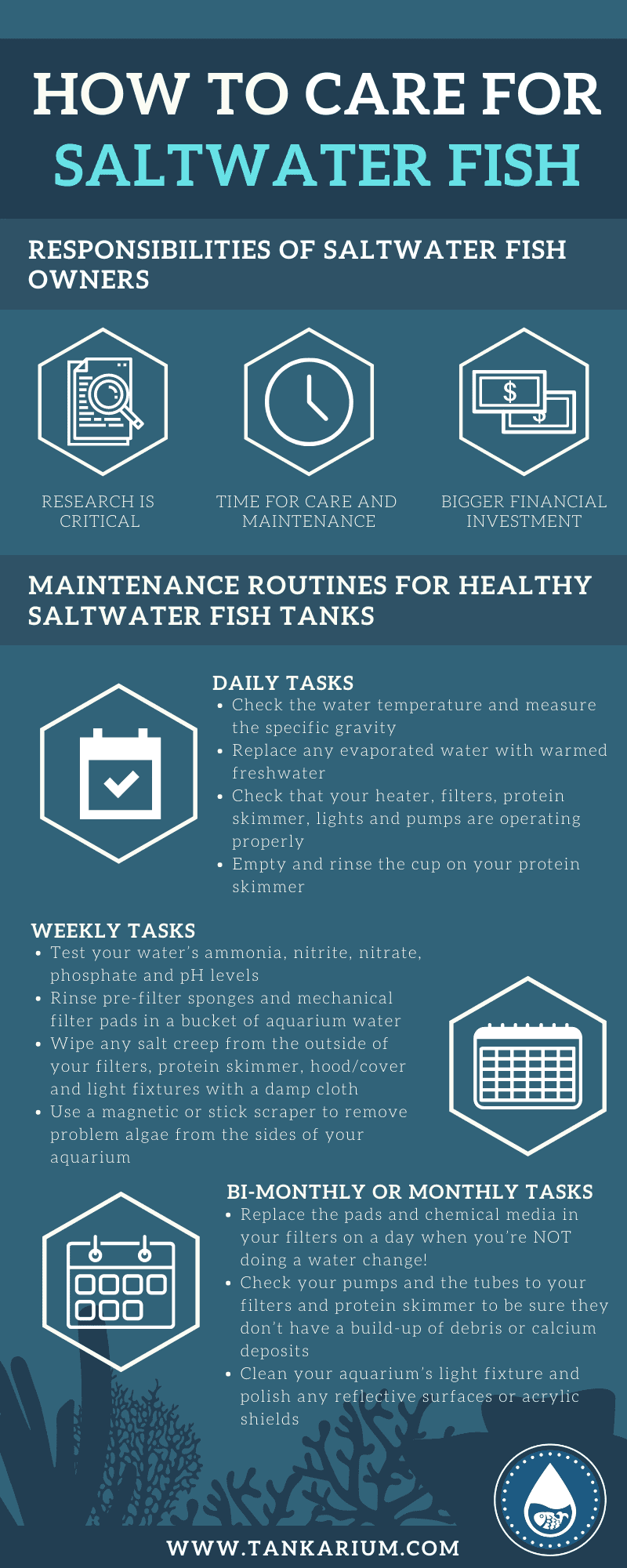How hard is it to maintain a saltwater tank? It’s true that many aquarists steer clear of them because they’re worried about the saltwater tank upkeep. It doesn’t have to be hard or even time consuming to maintain a healthy marine tank, so let’s talk about how to care for saltwater fish stress-free by following a good maintenance routine!
Saltwater Aquarium Care: Responsibilities of Saltwater Fish Owners
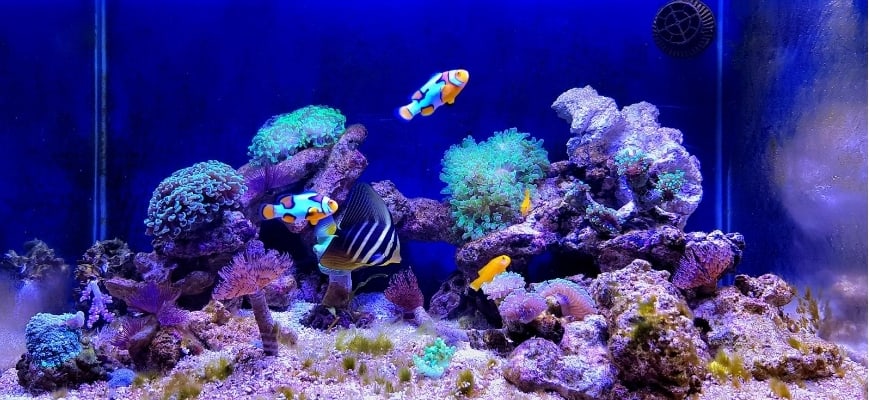
Starting a saltwater tank is definitely not a decision to make on a whim. Saltwater fish are challenging to keep because they have specific requirements in terms of their water quality and pH, and small deviations can often be fatal. Here are the three primary responsibilities of owning a saltwater tank:
Research is Critical!
The ideal water parameters of your saltwater aquarium will vary depending on the type of fish and/or corals you’re keeping. You’ll have to identify the species you’d like to keep and research whether they are suited to your experience level. You can’t do too much research, so take your time and ask for advice from a variety of sources!
Do You Have Time for Care and Maintenance?
The key to having a healthy tank of saltwater fish is to follow a regular routine and perform your daily, weekly, and monthly maintenance tasks on schedule. The time commitment isn’t huge, about 20 to 30 minutes a day, and maybe a few hours a month, but you can’t delay or skip your routine without risking your tank’s health.
Bigger Financial Investment
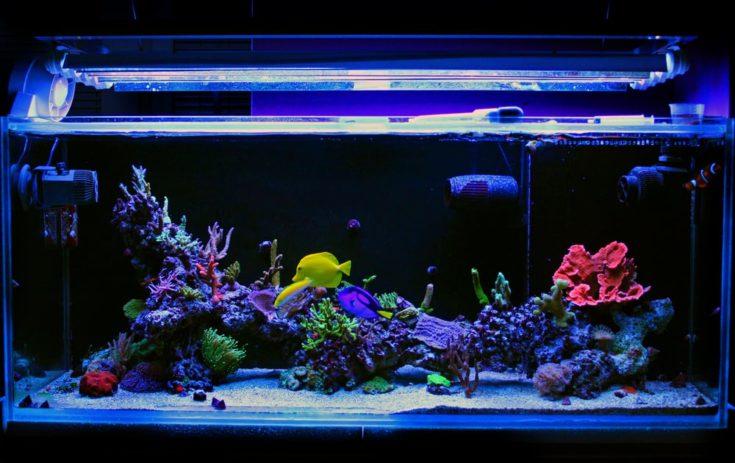
You can expect to spend at least a few hundred dollars on equipment to set-up a marine tank, and possibly quite a bit more for premium brands or larger aquariums. Marine animals are also substantially more expensive than freshwater fish. If something goes wrong in your saltwater tank, it could cost a lot to replace your fish.
Maintenance Routines for Healthy Saltwater Fish Tanks
Once you’ve done the research and invested in your ideal set-up, the critical component to having a healthy saltwater tank is in devising your maintenance routines and adjusting them as needed. The amount of time it will take you to care for your saltwater aquarium will vary over the years as your tank matures.
New saltwater aquariums, like freshwater tanks, require time to establish colonies of healthy bacteria that can break ammonia down into safer forms. It’s usually a good idea to perform weekly water changes for the first few months and test the water frequently so you can catch problems before they hurt your fish.
As your tank matures, you may not need to test or change the water quite as often, but instead may have to spend more time cleaning salt from equipment (salt creep) or removing algae from the decor. Every aquarist eventually develops their own routines, so take the schedule below as a suggestion and modify it as needed.
Daily Tasks
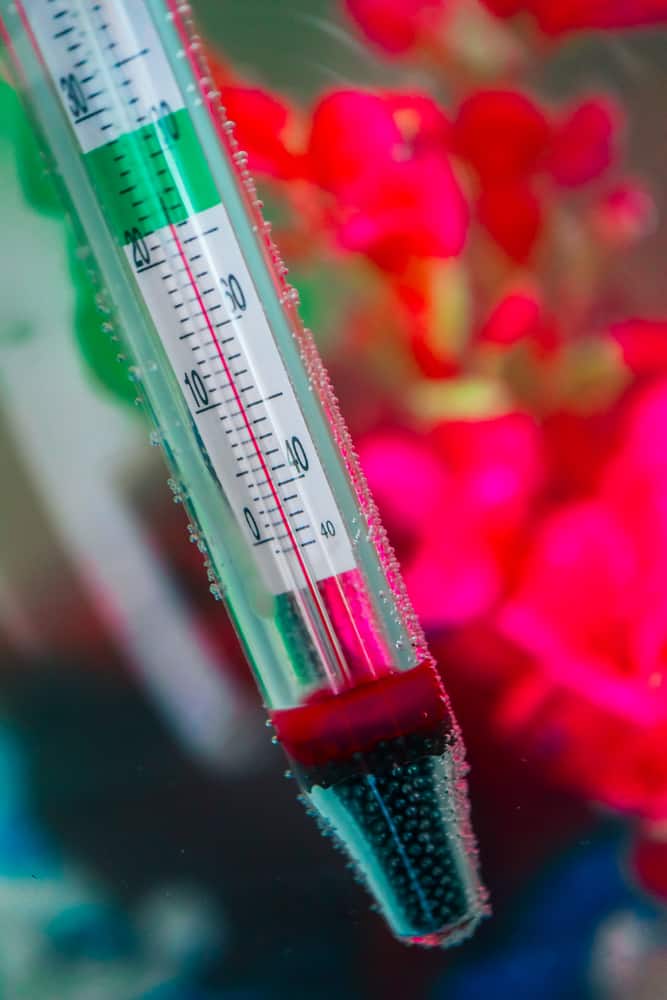
You should make it a habit to check on your fish and look over your equipment every day, as this is a great way to pick up on potential problems before they become catastrophic. I do my health checks in the morning and evening as I’m feeding my fish, examining their color and behavior while looking for signs of injury or illness.
Once a day I check the water temperature and measure the specific gravity with a refractometer or hydrometer, and then replace any evaporated water with warmed freshwater. As water evaporates from your tank, the salt is left behind, so adding freshwater every day restores salinity to the proper level.
Other Daily Aquarium Tasks include:
- Check that your heater, filters, protein skimmer, lights, and pumps are operating properly.
- Empty and rinse the cup on your protein skimmer to prevent a messy overflow.
Weekly Tasks
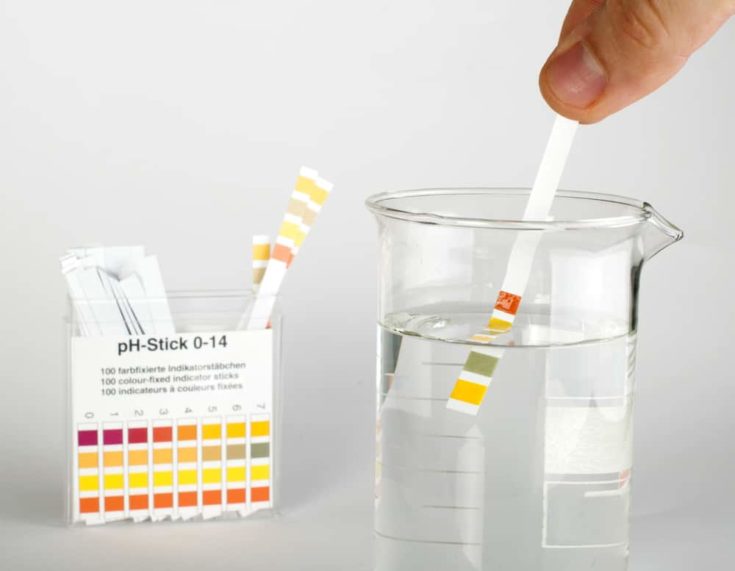
Once a week, I set aside an hour or more to test my aquarium’s water quality and to clean some of the equipment in the tank. Small Nano Tanks and new saltwater set-ups may also require weekly partial water changes, so be sure you have a batch of saltwater mixed or collected and ready to go.
You should be diligent in testing your water’s ammonia, nitrite, nitrate, phosphate and pH levels at least once a week for the first several months, and also the calcium levels if you have a reef tank. Saltwater species are much less tolerant of variation in their water quality, so testing can alert you that it’s time for a water change.
Other Weekly Equipment Maintenance Tasks:
- Rinse pre-filter sponges and mechanical filter pads in a bucket of aquarium water to prevent clogging. Don’t use tap water, as it will kill any good bacteria living in the sponges or pads!
- Wipe any salt creep from the outside of your filters, protein skimmer, hood/cover and light fixtures with a damp cloth.
- Use a magnetic or stick scraper to remove problem algae from the sides of your aquarium.
Bi-Monthly or Monthly Tasks
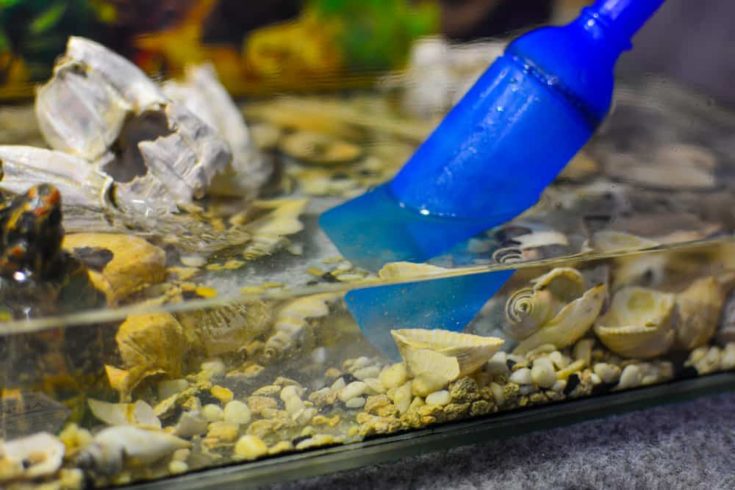
How often should you change the water in a saltwater tank? It really depends on the size of the tank, how many fish you’re keeping and the types of filtration systems you’re using, but in general, you’ll need to do a partial water change every two weeks to once a month for a mature tank. I usually change about 10% every two weeks.
Bi-Monthly Cleaning is an Ideal Schedule for Most Tanks
It’s less stressful for your marine fish to do smaller and more frequent water changes, because they don’t like it when their water quality shifts suddenly. Gradual changes in their water parameters are safer and less stressful. So it’s better to do a 10% water change every week or every other week than a 25% change once a month.
If you’re wondering how to clean a saltwater tank, it’s just like cleaning a freshwater set-up; use a bucket and siphon to vacuum the gravel and remove debris from the substrate. You can use the discarded water in the bucket for rinsing your filter pads or when scrubbing stubborn algae from your decor.
Other Monthly and Bi-Monthly Aquarium Maintenance Tasks:
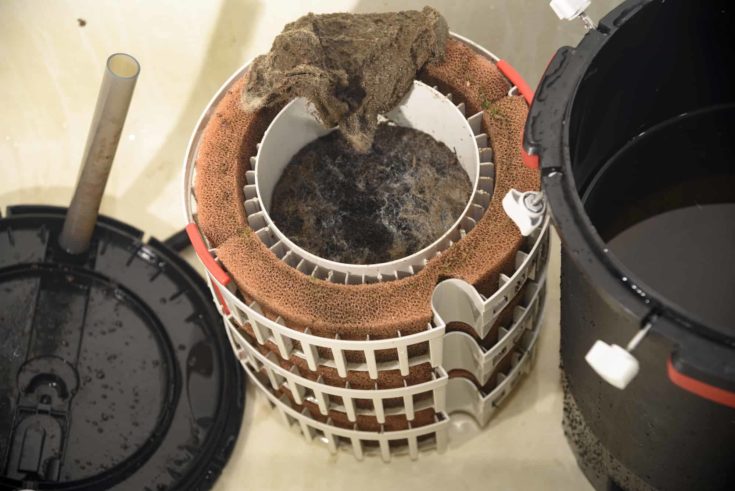
- Replace the pads and chemical media in your filters on a day when you’re NOT doing a water change!
- Remember, saltwater fish are especially sensitive to changes in their water quality, so replace your filter media the day before or after you’ve done a water change to give your fish time to adjust to the new conditions.
- Check your pumps and the tubes to your filters and protein skimmer to be sure they don’t have a build-up of debris or calcium deposits that could cause flow problems or a leak.
- You can use a bottle scrubber and some white vinegar to remove any debris inside the tubes or replace old or crimped tubes with new tubing.
- Clean your aquarium’s light fixture and polish any reflective surfaces or acrylic shields they may have to ensure the maximum amount of light is reaching the tank’s occupants. This is critical for reef tanks since corals require certain spectrums of light for photosynthesis.
Conclusion
While saltwater aquariums do take more work than freshwater set-ups, they aren’t really harder to maintain, just a bit more complicated. It’s a lot more efficient to follow a set routine for your daily, weekly and monthly aquarium maintenance. That way you can stop problems in their tracks and won’t fall behind schedule with your tank’s care!
